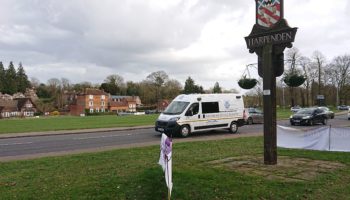Smart mobility could shape the future of our territories using technology such as dynamic Demand-Responsive Transport, which is a public transport service.
Flow and mobility management is a highly strategic matter for which there are no miracle solutions
On one hand, urban spreading speeds up (the UN estimates that 2.5 billion more people will live in cities by 2050). Car congestion is more and more expensive (17 billion euros per year in France, the equivalent of 1,943 euros for each motorised home) and as a matter of fact increases the investment costs on transport infrastructure. On the other hand, peri-urban and rural areas are neglected. Car are the most used mode of transport (and sometimes the only one available). If smart mobility does not solve all problems, it could, however, change existing paradigms to shape the future of our territories.
Smart Mobility: a technological and societal issue
Smart mobility is defined by the use of technology to serve the users’ mobility needs. To run, this technology needs data that is then collected, aggregated and processed.
In most cases, private companies handle this work, especially American giant firms like Google, Tesla or Apple. The best example is the Waze app (owned by Google), where individual user data is shared to serve everyone (and especially advertisers who can offer geo-located and contextualized advertising).
In some cases, Public Authorities collect the data themselves. This is the case with the city of Lorient (France), which has 200 sensors to track acoustic pollution in real time. The city of Rennes (France) calls on 35 volunteer residents to carry out air quality surveys.
Finally, the last option is the public-private partnership. For example, the city of Nice (France) and Uber have partnered on a pilot project for bus journeys in underserved areas at night. The city has access to anonymized user trips data. They are used to analyze the distribution of transport demand to better adapt the offer.
Smart mobility therefore is tied to a very large number of subjects. These include:
- The problems of carpooling and chauffeur-driven cars: to connect drivers and passengers.
- Bus geolocation: to anticipate waiting times and better manage routes.
- Real-time traffic: to smooth traffic flow.
- Managing available parking spaces: to save time, limit congestion and pollution.
The 7 characteristics of smart mobility
Smart mobility is a holistic approach that is not just technological. It also incorporates human, societal and environmental parameters:
- Flexibility: to allow users to choose the modes of transport that best suit their needs.
- Efficiency: to get users to their destination quickly and without disruption.
- Integration: to plan and display a complete route, door to door, regardless of the mode of transport used.
- Clean technologies: to move away from polluting vehicles in favor of zero-emission vehicles.
- Safety: to reduce the number of accidents and prevent them.
- Inclusiveness: to include people far from urban centers and conventional public transport.
- Accessibility: to offer access to a mobility solution to everyone, regardless of physical condition.
To work, smart mobility relies on intelligent data processing. Artificial intelligence, however, is not an end itself, but a tool to make mobility fairer and more inclusive. That’s why fair mobility is complementing smart mobility.
Dynamic Demand-Responsive Transport: an ideal solution to answer the Smart Mobility’s challenges
As its name suggests, Demand-Responsive Transport is a service that works only under reservation. Users can book their trip via their smartphone and track the progress of their vehicle in real time. It’s a relevant solution for peri-urban and rural areas, where demand for transport is too scattered and conventional lines are inefficient. It’s an ideal solution for today’s and tomorrow’s smart transportation.
Demand-Responsive transport is a public transport service that is a part of the smart mobility approach for various reasons:
- Flexibility: it adapts to schedules and mobility needs.
- Efficiency: its itinerary is automatically calculated and optimized according to user reservations. It’s less time on the road, less congestion and time savings for users and drivers.
- Multimodal integration: its itinerary is planned from the departure to the arrival. In addition, it can interface with other modes of transport if needed (bus, metro, tram, etc.).
- Clean technologies: it promotes clean vehicles.
- Safety: its drivers are professionals whose job is to drive users in the best conditions.
- Inclusiveness: it covers all geographic areas, from villages to large urban centers where the transport offer is generally very limited (even non-existent), especially at night.
- Accessibility: it makes travel easier for people with reduced mobility, the elderly, young people and users who do not have driving license.
Demand-Responsive transport is open to all territories and adapts to all scales. It offers new perspectives for public authorities. It is good citizen, human and environmental practice that transforms technology into a lever for cohesion and development. All for a controlled cost.
Read more about the other advantages of the Demand-Responsive Transport




